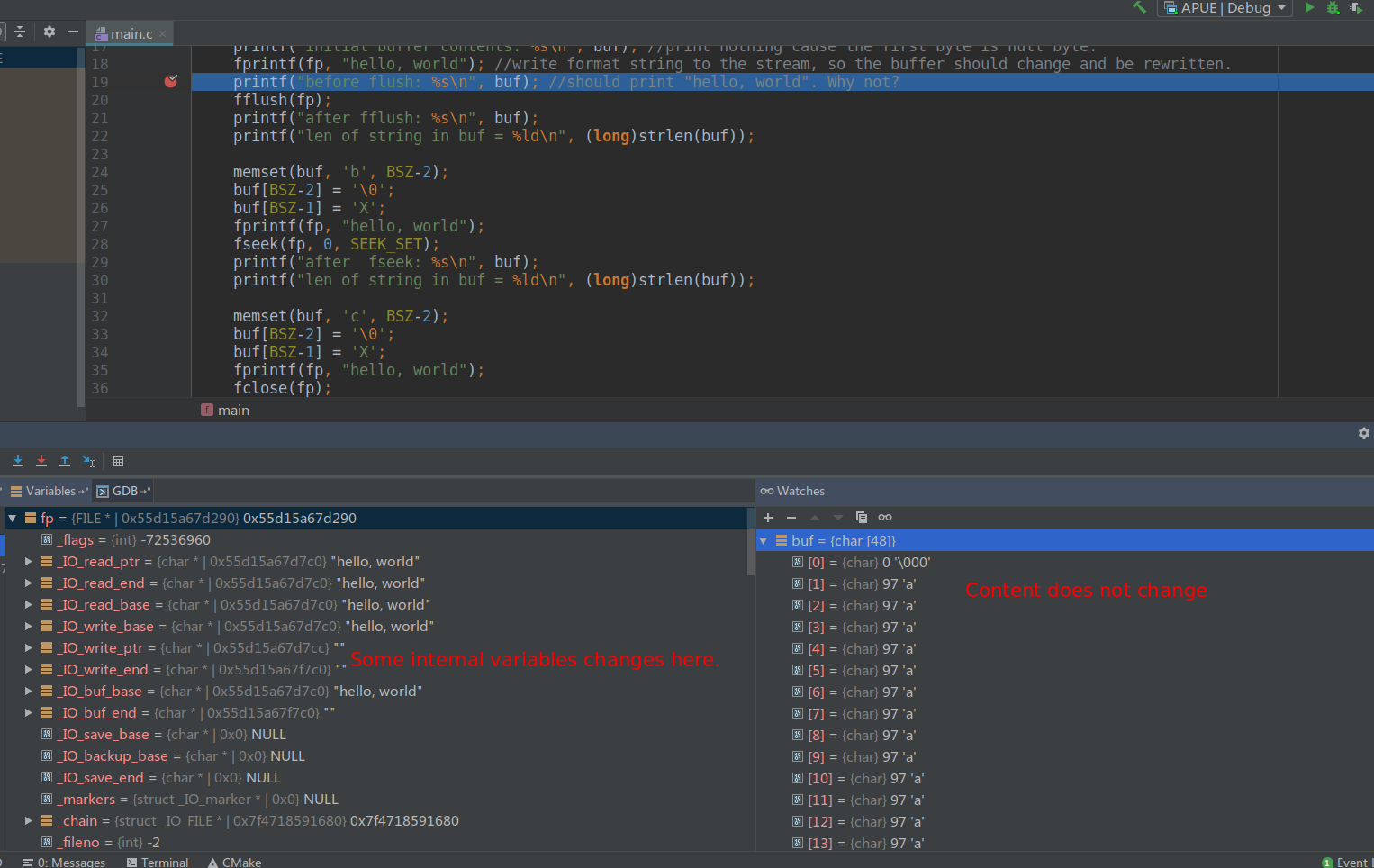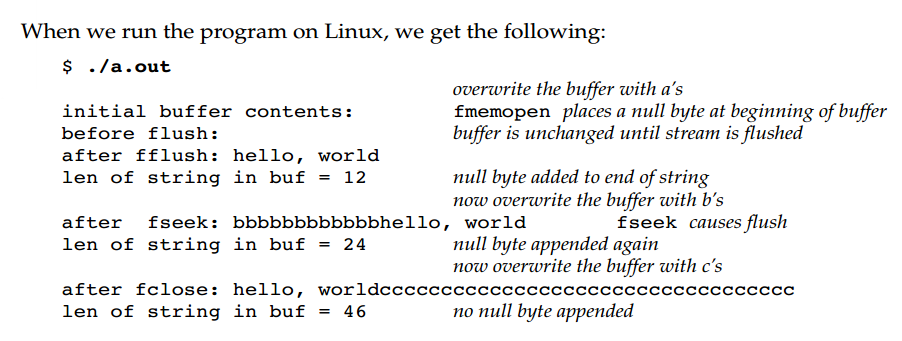I don't understand an example of fmemopen from APUE
#include <stdio.h>
#include <string.h>
#define BSZ 48
int
main()
{
FILE *fp;
char buf[BSZ];
memset(buf, 'a', BSZ-2);
buf[BSZ-2] = '\0';
buf[BSZ-1] = 'X';
if ((fp = fmemopen(buf, BSZ, "w+")) == NULL) //"w+" truncate the file by setting the first byte to null byte
printf("fmemopen failed\n");
printf("initial buffer contents: %s\n", buf); //print nothing cause the first byte is null byte.
fprintf(fp, "hello, world"); //write format string to the stream, so the buffer should change and be rewritten.
printf("before flush: %s\n", buf); //should print "hello, world". Why not?
fflush(fp);
printf("after fflush: %s\n", buf);
printf("len of string in buf = %ld\n", (long)strlen(buf));
memset(buf, 'b', BSZ-2);
buf[BSZ-2] = '\0';
buf[BSZ-1] = 'X';
fprintf(fp, "hello, world");
fseek(fp, 0, SEEK_SET);
printf("after fseek: %s\n", buf);
printf("len of string in buf = %ld\n", (long)strlen(buf));
memset(buf, 'c', BSZ-2);
buf[BSZ-2] = '\0';
buf[BSZ-1] = 'X';
fprintf(fp, "hello, world");
fclose(fp);
printf("after fclose: %s\n", buf);
printf("len of string in buf = %ld\n", (long)strlen(buf));
return(0);
}
I use Clion to debug and when it finishes fprintf(fp, "hello, world"); and comes to printf("before flush: %s\n", buf);, I see the content of char array buf does not change and print nothing. Why!?
A debug screenshot for better description:
Also, quoted from the book:
Third, a null byte is written at the current position in the stream whenever we increase the amount of data in the stream’s buffer and call
fclose,fflush,fseek,fseeko, orfsetpos.
What does this mean?
Update:
From the book and it seems that buffer is unchanged until stream is flushed is the expected result.



before flush: hello, world. – Mascon_fmemopensymbol not found on Mac... Linker error. – Access